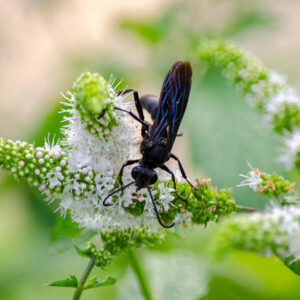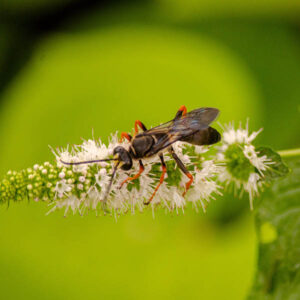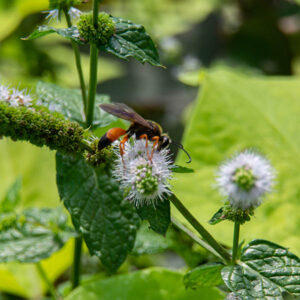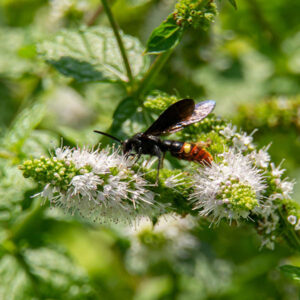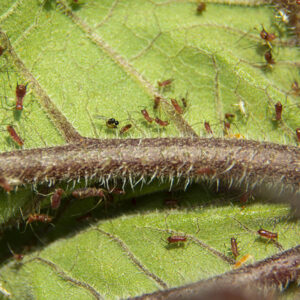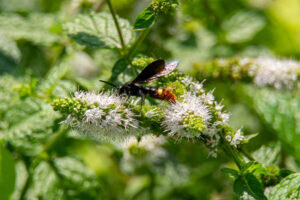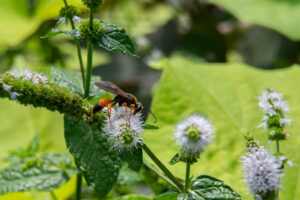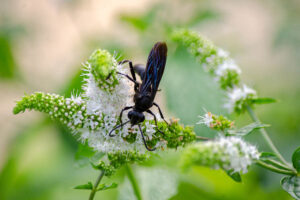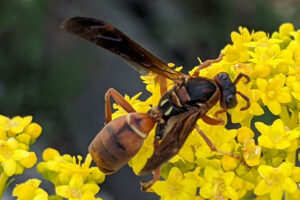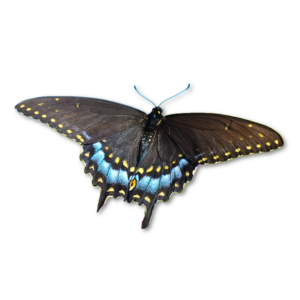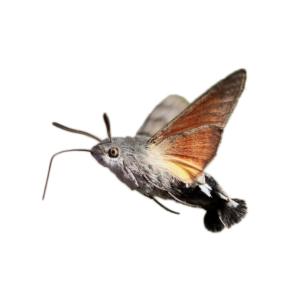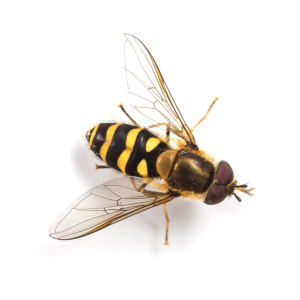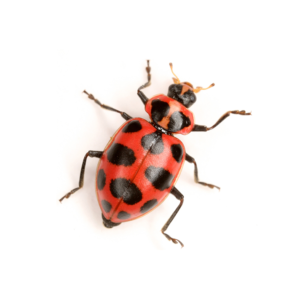Wasps
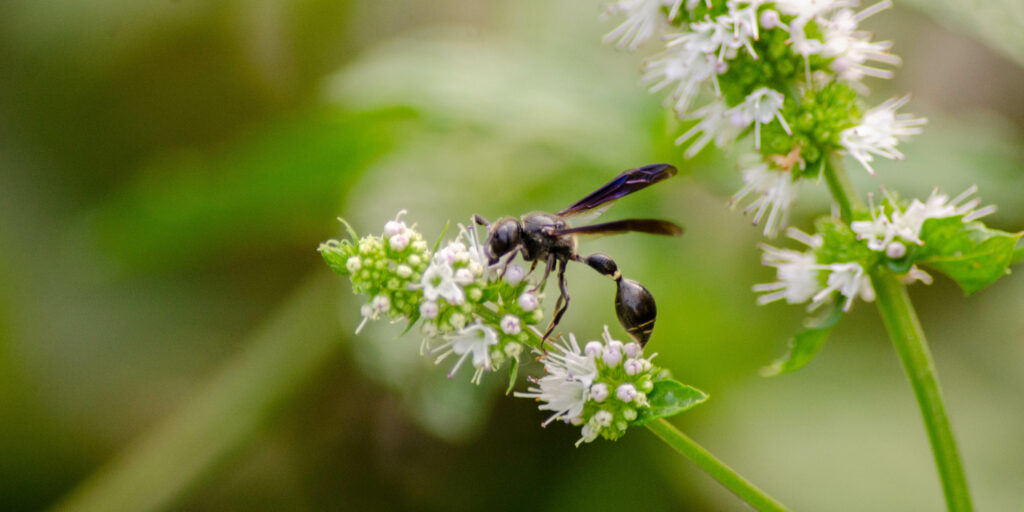
While they often get a bad name, wasps can play an important role as pollinators. Nectar is the primary food source for adult wasps. In general, wasps have short mouthparts and tongues and therefore visit flowers with shallow corollas that have easily accessible nectar. Plants in the Apiaceae (carrot), Asteraceae, Lamiacea (mint), Apocynaceae (dogbane, milkweed) families are often visited by wasps.
Wasps are often less efficient at pollinating plants than bees. Since they are not as hairy, and their hairs are straight, not branched, pollen is much less likely to stick to them and be transferred from flower to flower.
In addition to pollination services, wasps also provide pest control. Female wasps will hunt for prey to feed their larva. A variety of different insects and arthropods may serve as food, including caterpillars, grasshoppers, flies, beetles, and spiders.
Additionally, parasitoid wasps will lay eggs in or on their insect hosts. These small wasps will attack various insects, including aphids, whiteflies, mealybugs, caterpillars, and insect eggs. After consuming their host, the larvae will pupate, and adult wasps will emerge and go on lay eggs on new hosts.
Species Details
